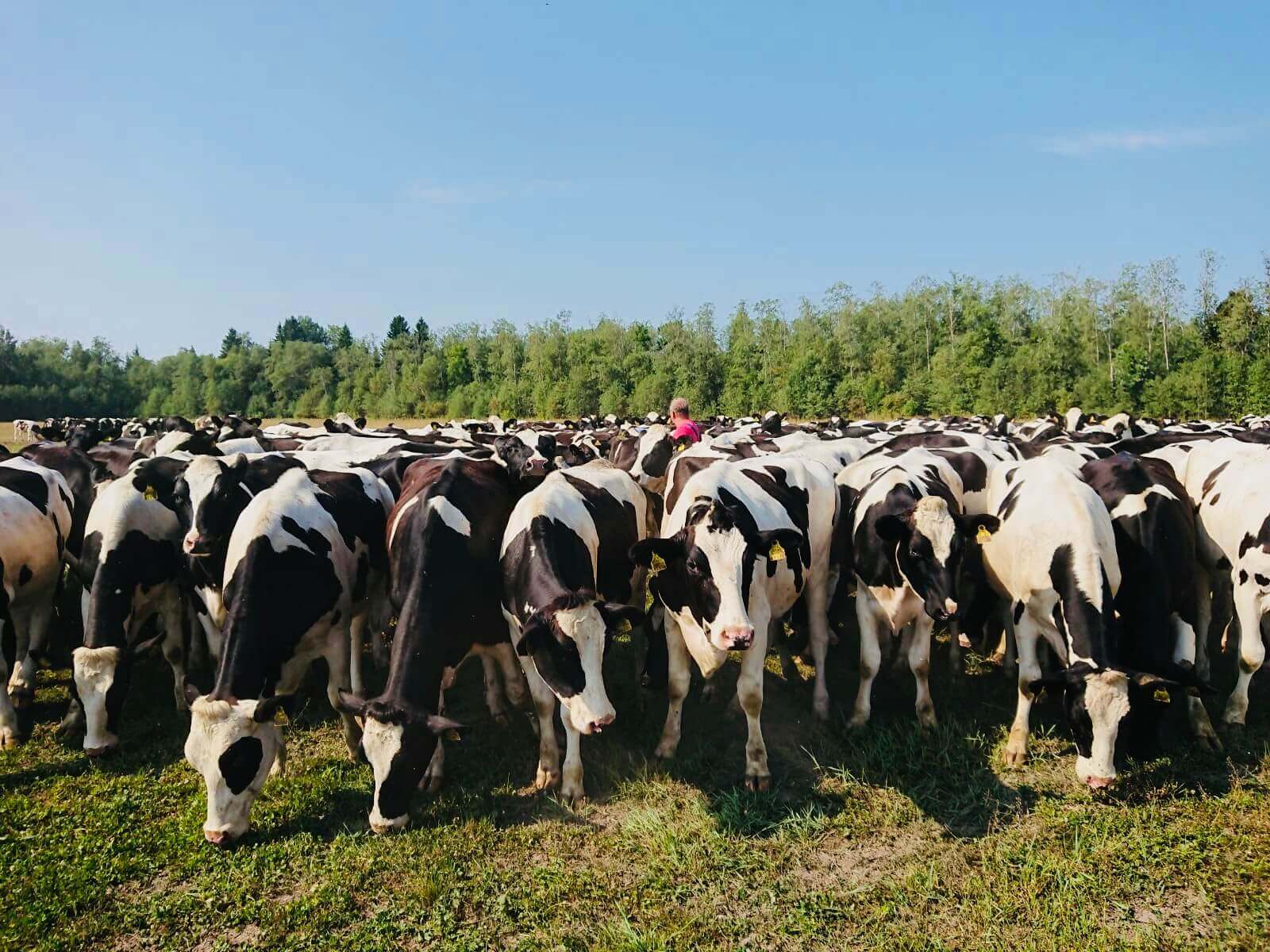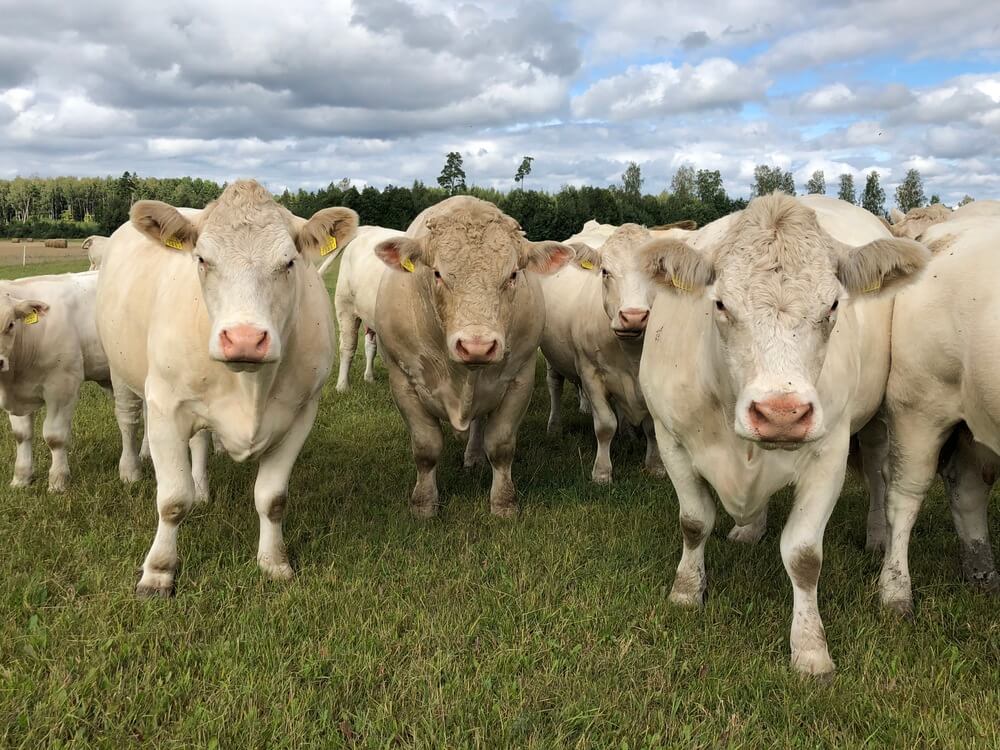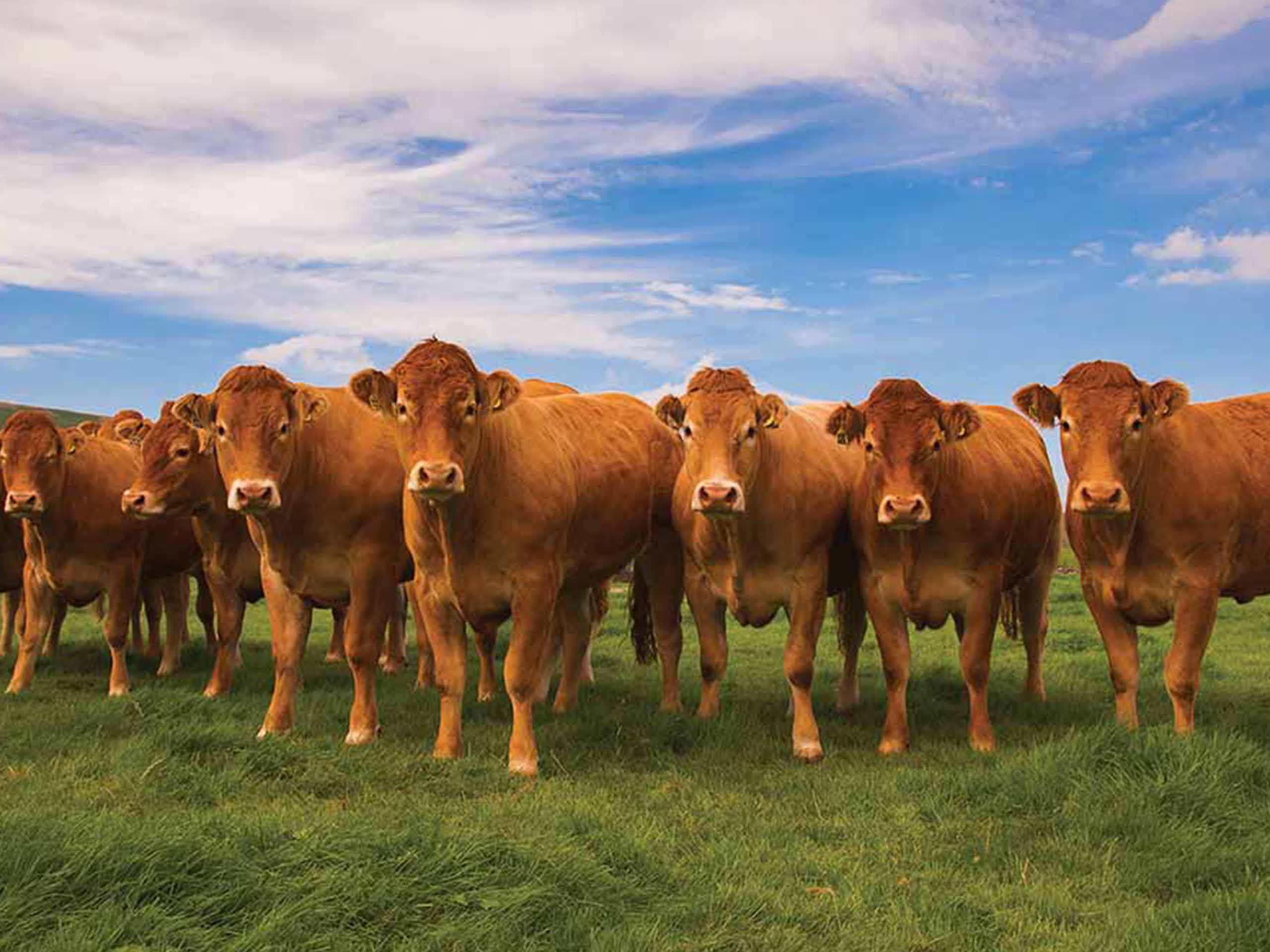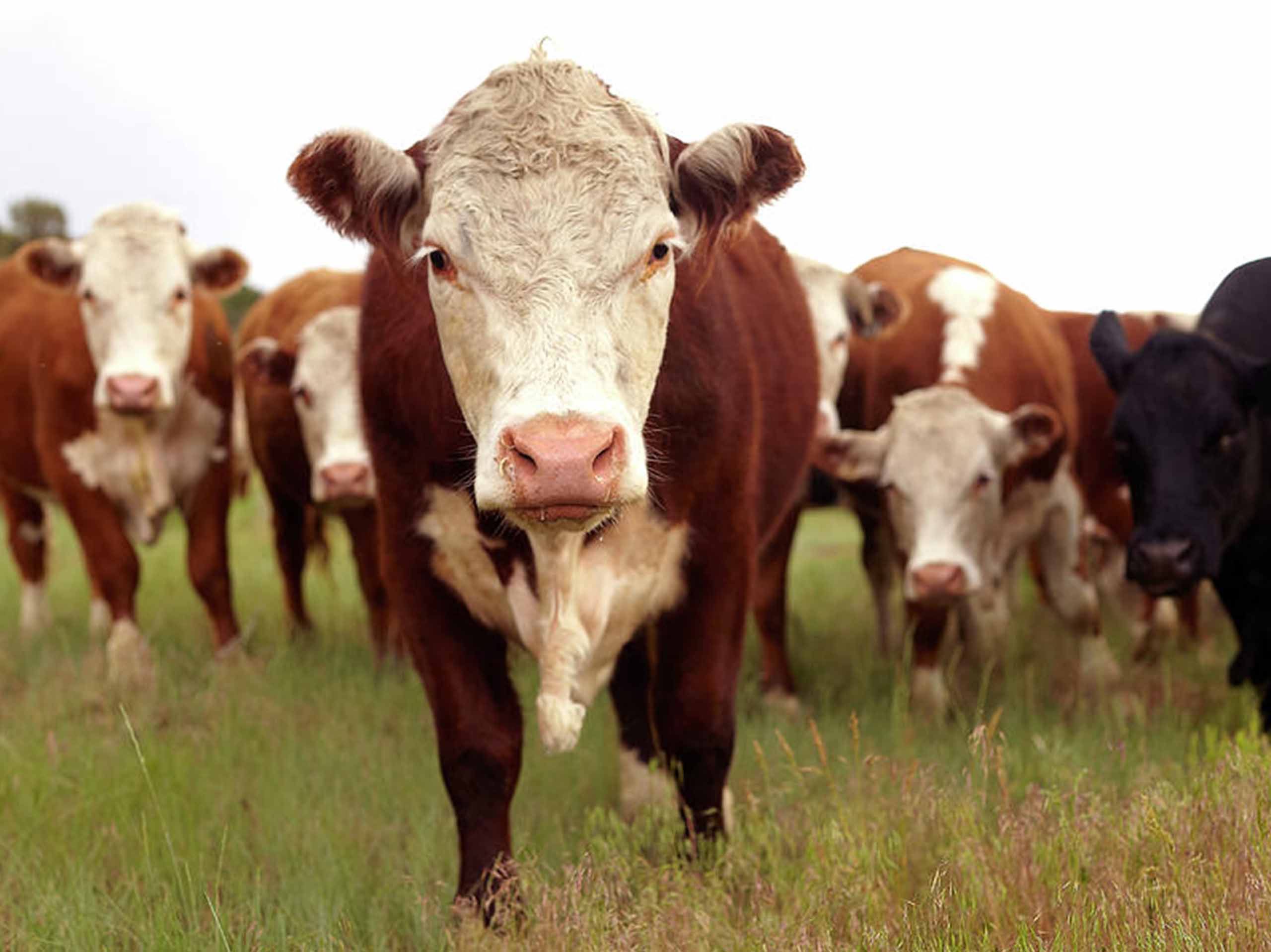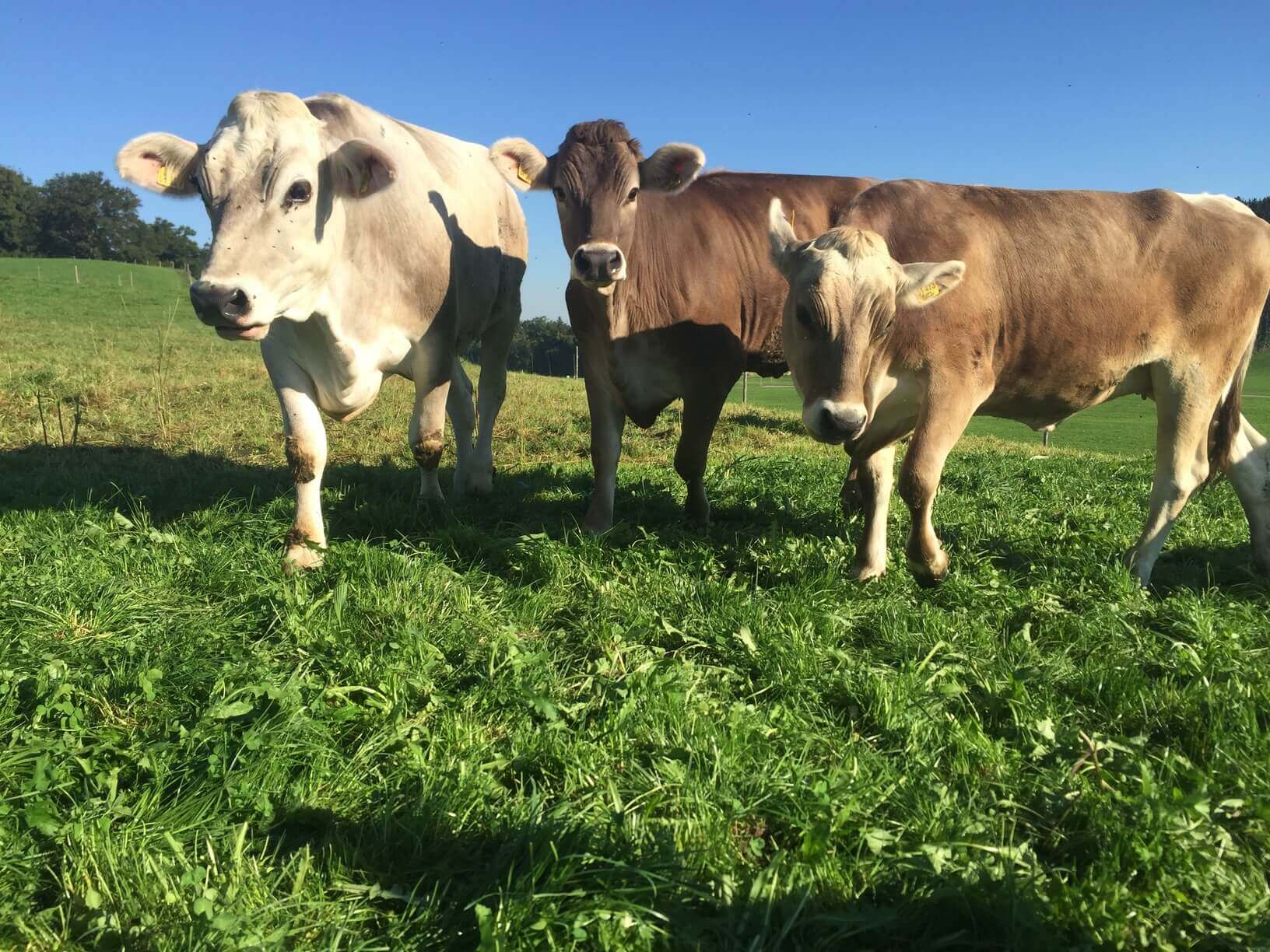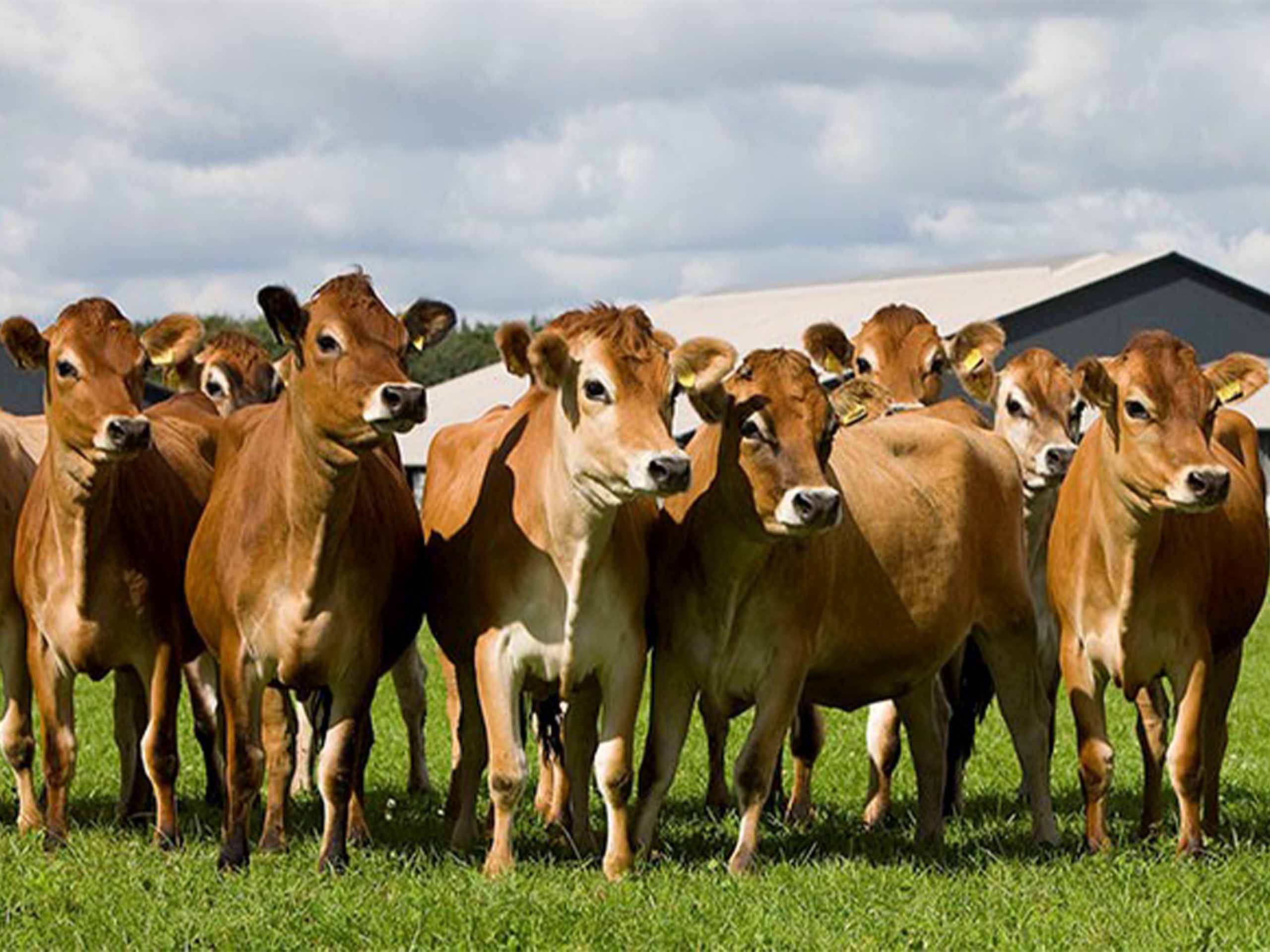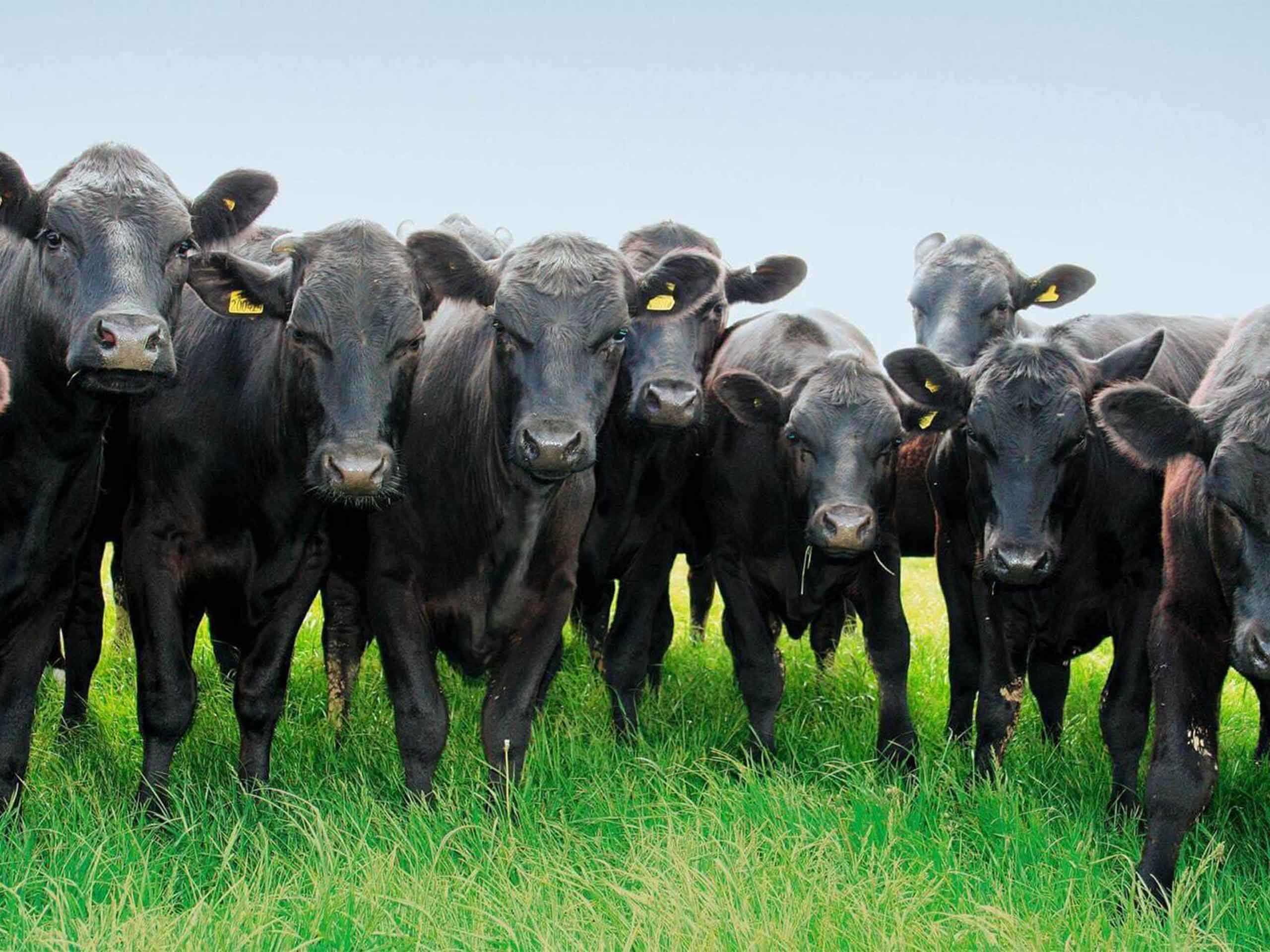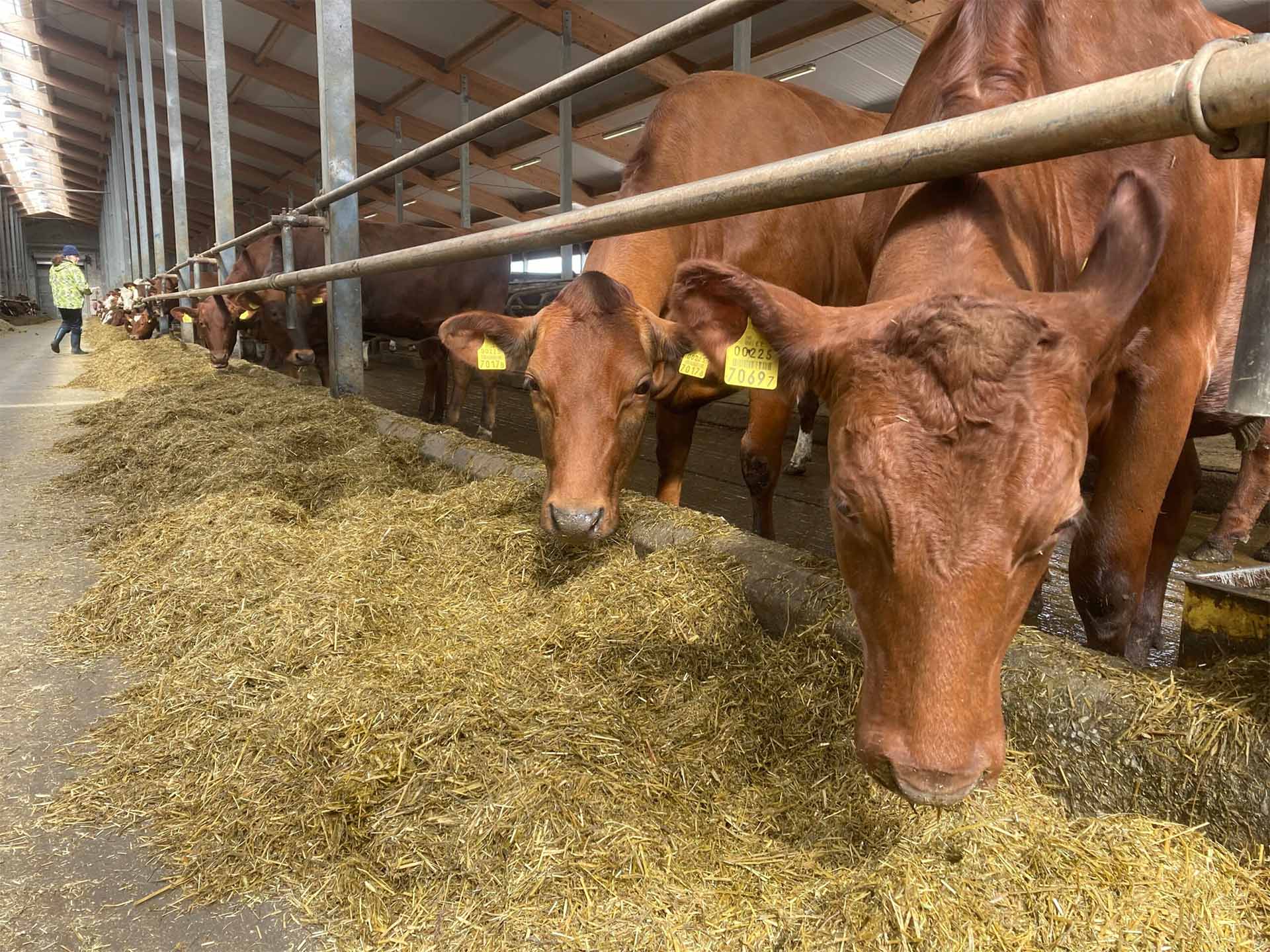ХЕРЕФОРД
Считается, что герефордская порода произошла от мелкого красного скота, существовавшего в римской Британии много веков назад. Как правило, они красные с белыми пятнами, а телята, рожденные от герефордских быков, почти всегда имеют характерную белую голову, которую многие фермеры считают преимуществом для легкой идентификации на рынке.
Многие герефордские скоты имеют естественный полюс благодаря селекционной практике разведения, что может быть полезно для фермеров, обеспокоенных усилиями и стрессом, связанными с дехорнингом. Это особенно важно, если рогатый скот будет содержаться в непосредственной близости от других животных.
В среднем герефордские быки весят около 1 200 кг, а коровы - около 800 кг. Порода процветает в умеренном климате, например, в Великобритании и Ирландии, где погода влажная и нет резких перепадов температур.
Герефордский скот известен своими превосходными материнскими инстинктами, обеспечивая надежную защиту своих телят в местах возможного присутствия хищников. Это может быть полезно для фермеров, беспокоящихся о безопасности новых телят, хотя агрессивное поведение защитных плотин по отношению к посетителям иногда может представлять опасность. К быкам, независимо от породы, всегда следует относиться с осторожностью. Дополнительные рекомендации вы найдете в нашей статье о безопасности быков.
Традиционный герефорд, признанный оригинальным сортом, классифицируется как порода "меньшинства", имеющая важное генетическое значение, что подчеркивает необходимость сохранения его генов для будущих поколений.
Этот скот имеет большую продолжительность жизни, что помогает фермерам снизить затраты на замену стада. Герефорды известны такими желательными признаками, как ранняя зрелость и высокая плодовитость. Период беременности у них короче, чем в среднем у крупного рогатого скота такого размера, что облегчает ирландским фермерам ведение беременности, снижая тем самым сопутствующие расходы. Порода также отличается низким уровнем смертности телят, что обнадеживает фермеров, обеспокоенных осложнениями при отеле. Однако герефорды могут быть подвержены опущению влагалища, что может создать проблемы во время отела. Улучшение питания связано с уменьшением случаев пролапса, но при возникновении любых проблем необходимо проконсультироваться с ветеринаром.
Герефордские коровы стабильно отнимают одного теленка в год, даже при не самых лучших кормовых условиях. Зачатие обычно происходит примерно с двухлетнего возраста.
Герефордский скот отличается послушным и покладистым характером, что облегчает управление стадом, особенно полезное для фермеров, работающих в одиночку. Доярки также известны своей легкостью в доении, что делает этот процесс простым.
Однако герефорды могут унаследовать некоторые генетические проблемы. Рак глаза часто встречается у скота из более солнечных регионов, но для ирландского скота он может не представлять значительной угрозы из-за более низкого уровня солнечной радиации. Солнечные ожоги могут быть проблемой для герефордов в Ирландии, особенно на их бледном вымени, которое может пострадать от интенсивного летнего солнечного света.
Ирландские фермеры пользуются преимуществами нескольких программ Certified Hereford Schemes по всей стране, которые представляют собой программы премиум-класса, предлагающие бонусные цены на герефордскую говядину. Это позволяет Bord Bia рекламировать породу как "высококачественную".
Средний возраст откорма герефордского скота составляет примерно 18-20 месяцев. По данным Teagasc, одно и то же количество корма может обеспечить превосходный выход говядины примерно для 75 голов герефордского скота, по сравнению с 50 животными других распространенных пород. Герефорды эффективно перерабатывают кормовой рацион в мышечную массу, легко набирают вес и производят высококачественные туши.
Для фермеров с небольшими предприятиями герефорды могут быть особенно подходящими. Teagasc рекомендует норму содержания 1 акр на одно животное, продаваемое каждый год, для весенней системы с герефордскими кроссами, по сравнению с 1,2 акрами для континентальных кроссов.

